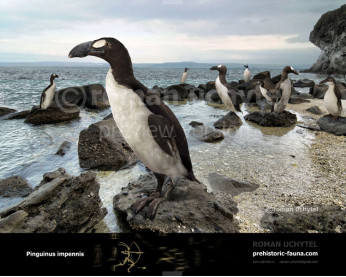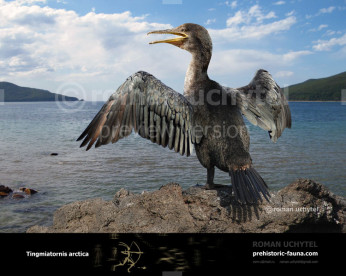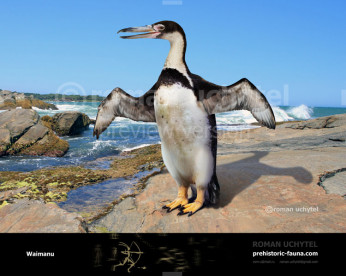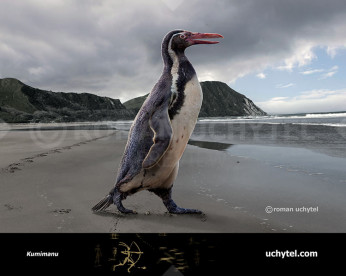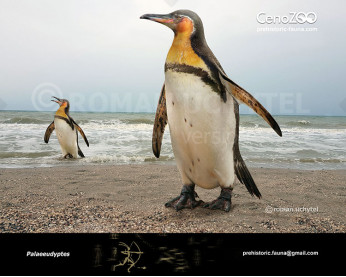Anthropornis
29312931
Anthropornis (†Anthropornis (Wiman, 1905))
Class: Aves
Order: Sphenisciformes
Family: Spheniscidae
Subfamily: †Palaeeudyptinae
Time period: Late Eocene–early Oligocene (Seymour Island, Antarctica and New Zealand)
Size: more than 1,6 m in height, 50 - 90 kg of weight
Anthropornis is a genus of giant penguin, reached 1.8 m in length from the tip of the beak to the tip of the tail, and 90 kg in weight. There is also an estimate that one remain of Anthropornis can reach that body length of 2.05 m and 108 kg in weight. Fossils of it have been found in the La Meseta Formation on Seymour Island off the coast of Antarctica and in New Zealand. By comparison, the largest modern penguin species, the emperor penguin, is just 1.2 m long.
This penguin that lived 45-33 million years ago, during the Late Eocene and the earliest part of the Oligocene.
The type species, Anthropornis nordenskjoldi, had a bent joint in the wing, probably a vestigial trait from its flying ancestors.
Payment
You may use multiple payment methods to buy image such as credit cards, PayPal and bank transfer.
Anthropornis (†Anthropornis (Wiman, 1905))
Class: Aves
Order: Sphenisciformes
Family: Spheniscidae
Subfamily: †Palaeeudyptinae
Time period: Late Eocene–early Oligocene (Seymour Island, Antarctica and New Zealand)
Size: more than 1,6 m in height, 50 - 90 kg of weight
Anthropornis is a genus of giant penguin, reached 1.8 m in length from the tip of the beak to the tip of the tail, and 90 kg in weight. There is also an estimate that one remain of Anthropornis can reach that body length of 2.05 m and 108 kg in weight. Fossils of it have been found in the La Meseta Formation on Seymour Island off the coast of Antarctica and in New Zealand. By comparison, the largest modern penguin species, the emperor penguin, is just 1.2 m long.
This penguin that lived 45-33 million years ago, during the Late Eocene and the earliest part of the Oligocene.
The type species, Anthropornis nordenskjoldi, had a bent joint in the wing, probably a vestigial trait from its flying ancestors.

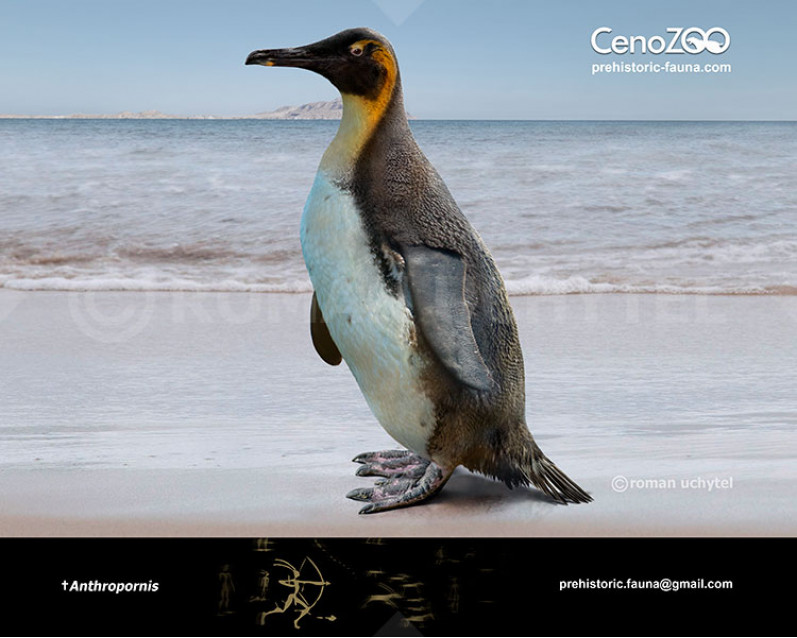
-797x638.jpg)
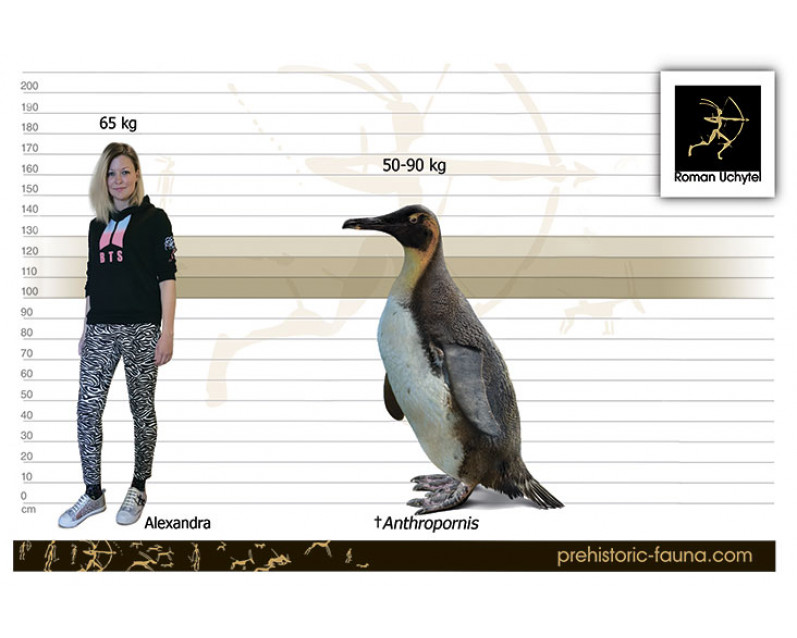

-70x56.jpg)

